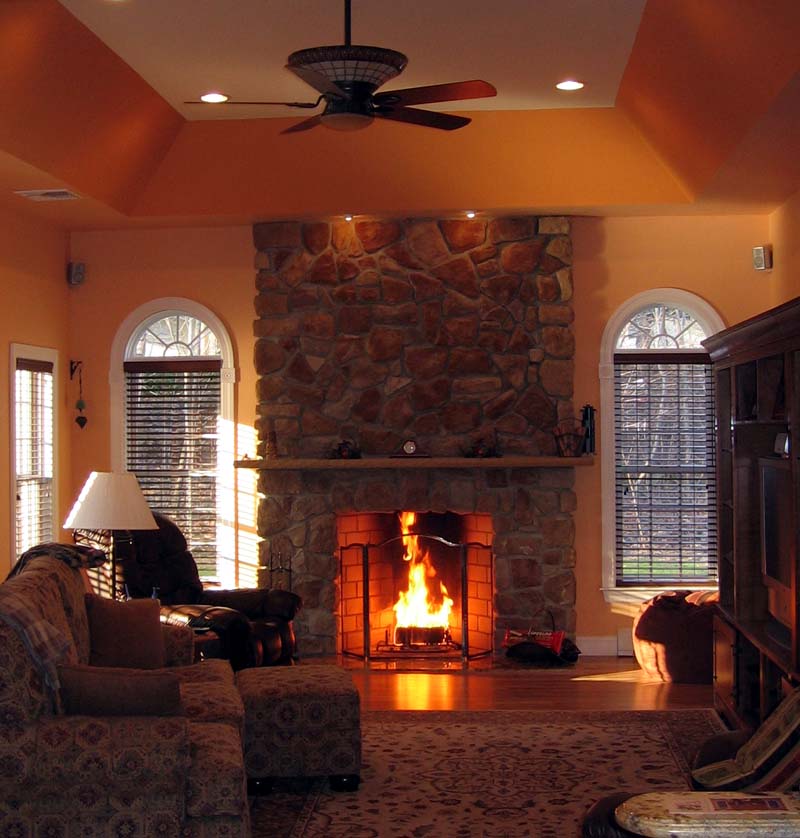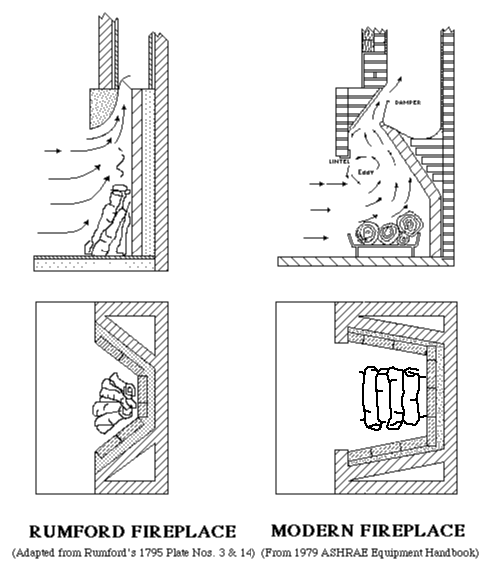Green Fireplaces
What Features Would a Green Fireplace Have?
01/31/10

|
1) Clean-burning 2) Energy Efficient 3) Integrated Ventilation 4) Durability 5) Thermal Mass 6) Radiant Heat 7) Renewable Fuel
|

|
|
Current Green Fireplace Rules There is very little in the Green literature on fireplaces - most of it negative. There seems to be some underlying assumption that fireplaces are dirty and inefficient and, if we must indulge the irrationality of those who love fireplaces, at least we can try to isolate the fireplaces and keep them from interfering with the rest of the modern features in a green house. Some would say the concept of a "green fireplace" is oxymoronic. The emerging National Green Building Standard mostly views fireplaces negatively, requiring new masonry fireplaces to "have gasketed doors, outside combustion air, and a chimney top damper" and awarding up to 7 points for removing fireplaces altogether in renovations.* LEED has some comments about fireplaces under "combustion venting" in the LEED for Homes program. They seem to be mostly concerned about smoking fireplaces and indoor air quality. LEED also recently added a preferred "install no fireplace" option. Googling "green fireplaces" gets a lot of ads about gas and electric fireplaces and some dire predictions about outlawing all wood-burning. In an article about "green stoves" in Hearth Marketing James E. Houck and David R. Broderick interview EPA regulators. Every one seemed to say it was "too early to tell" but went on to advocate the cleanest and most efficient stoves and urged the manufacturers of other wood-burning appliances (but didn't mention fireplaces) to contact EPA about the EPA's "Green Label program".
|
Future of Green Fireplace Rules On a positive note, fireplaces are still permitted according to LEED and National Green Building Standard guidelines, but it may be a struggle to get any "points" for including a fireplace. "Green fireplaces" will have to be clean-burning and efficient. They also may have to be provided with combustion/ventilation air and sealed off with tight-fitting doors and dampers. The fireplace doors, of course, would block most of the radiant heat but the tight-fitting dampers and combustion/ventilation air sound good if accomplished in conjunction with the LEED recommended whole house perspective on ventilation. With a passing familiarity with the LEED program and our masonry industry efforts to emphasize our strengths, I would add durability and thermal mass. Locating the chimney mass inside the exterior walls of the house and exposing the masonry chimney walls to take advantage of all that thermal mass could be worth points. By knowing how fireplaces heat I would add the advantages of radiant heat and the use of wood as a renewable fuel.
1) Clean-burning 2) Energy Efficient 3) Integrated Ventilation 4) Durability 5) Thermal Mass 6) Radiant Heat 7) Renewable Fuel
|
<< Back to Green Fireplaces -
Forward to Emissions >>
Comments

Back to Green Rumfords
Buckley Rumford Fireplaces
Copyright 1996 - 2010 Jim Buckley
All rights reserved.
webmaster